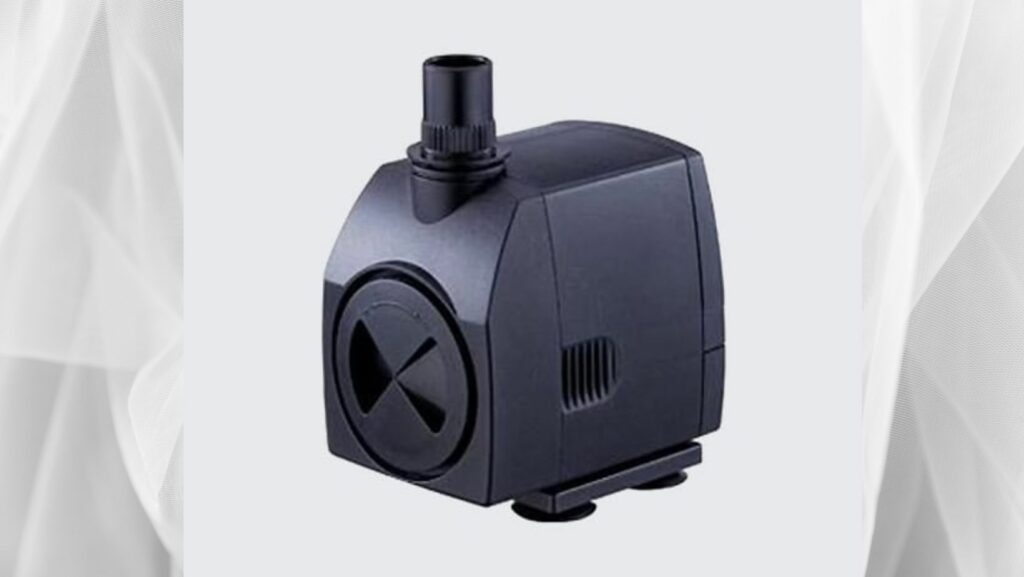A well-maintained pond can become the centerpiece of your garden, adding beauty and tranquility to your outdoor space. A reliable submersible fountain pump is one of the most critical components of a healthy and visually appealing pond. This pump ensures proper water circulation and aeration and helps keep your pond clear of debris. But with so many options available, selecting the right submersible fountain pump can feel overwhelming. This guide will help you understand the factors to consider when choosing the best pump for your pond.
Understand the Purpose of a Submersible Fountain Pump
A submersible fountain pump is designed to operate while submerged underwater. Its primary role is to circulate water within your pond. Moving water through a filtration system or simply powering a fountain helps keep the water oxygenated and clean. A well-functioning pump ensures a beautiful water display and helps prevent stagnation, which can lead to algae growth, unpleasant odors, and an unhealthy environment for aquatic life.
Determine the Size of Your Pond
One of the first things to consider before you get a submersible fountain pump is the size of your pond. The pump you select must be able to handle the volume of water in your pond. As a general rule of thumb, your pump should be able to circulate at least half of your pond’s total water volume every hour. For example, if your pond holds 1,000 gallons of water, you’ll need a pump with a flow rate of at least 500 gallons per hour (GPH).
If you plan to add a water feature like a fountain or waterfall, you may need a pump with a higher flow rate to accommodate the additional water movement. In this case, it’s always best to err on the side of a slightly more powerful pump to ensure it can handle all your needs.
Consider the Flow Rate and Head Height
The flow rate of a submersible pump is measured in gallons per hour (GPH), and it’s essential to match this rate with the requirements of your pond.

In addition to considering the pond’s water volume, you’ll also need to consider the height at which the pump needs to push water. This is known as the “head height” or “maximum lift.”
If you plan to install a fountain, waterfall, or another feature that requires the water to be pushed upward, the pump must have a sufficient head height rating. The higher the fountain or waterfall, the more powerful the pump needs to be.
Energy Efficiency and Long-Term Costs
Pond pumps operate continuously, so energy efficiency is crucial when selecting a submersible fountain pump. More energy-efficient pumps can save you money in the long run, especially if you have a larger pond or extensive water features that require a high flow rate. Look for pumps with energy-efficient motors designed for continuous operation without excessive power.
While a cheaper pump may seem appealing initially, it’s essential to consider the long-term energy costs. Opting for a slightly more expensive, energy-efficient model can significantly save time. Additionally, an energy-efficient pump is often more environmentally friendly, which can be important for reducing their ecological footprint.
Check for Durability and Reliability
Since a submersible fountain pump will be constantly underwater and working around the clock, you’ll want to choose a model known for its durability and reliability. Look for pumps made from corrosion-resistant stainless steel or high-quality plastics. A durable pump is less likely to break down, ensuring your pond’s water remains clean and well-circulated.
Many manufacturers offer warranties on their pumps, so check the length and terms of the warranty before making your purchase. A good warranty can provide peace of mind and protect your investment in case of any defects or malfunctions.
Noise Levels
Submersible pumps are generally quieter than external pumps, as the water surrounding the unit helps muffle the noise.

However, some models are quieter than others. If your pond is located near a seating area or outdoor living space where you spend a lot of time, you may want to prioritize a quiet pump. Check product reviews and specifications to find pumps that operate with minimal noise.
Budget Considerations
Submersible fountain pumps are available at a range of prices, from budget-friendly options to high-end models. When choosing a pump, it is essential to balance cost with the features you need. While opting for the cheapest model may be tempting, investing in a reliable and energy-efficient pump can save you money on repairs and electricity over time.
Conclusion
Choosing the best submersible fountain pump for your pond doesn’t have to be complicated. You can find a pump that suits your specific needs by considering pond size, flow rate, head height, energy efficiency, and budget. With the right pump, your pond will remain clean, healthy, and visually stunning for years.


More Stories
Vinyl Roofing: The Ultimate Guide to Durable and Cost-Effective Roofing Solutions
Why Your Yard Floods Every Time It Rains (And How to Fix It)
4 Ways to Create an Outdoor Oasis on a Budget